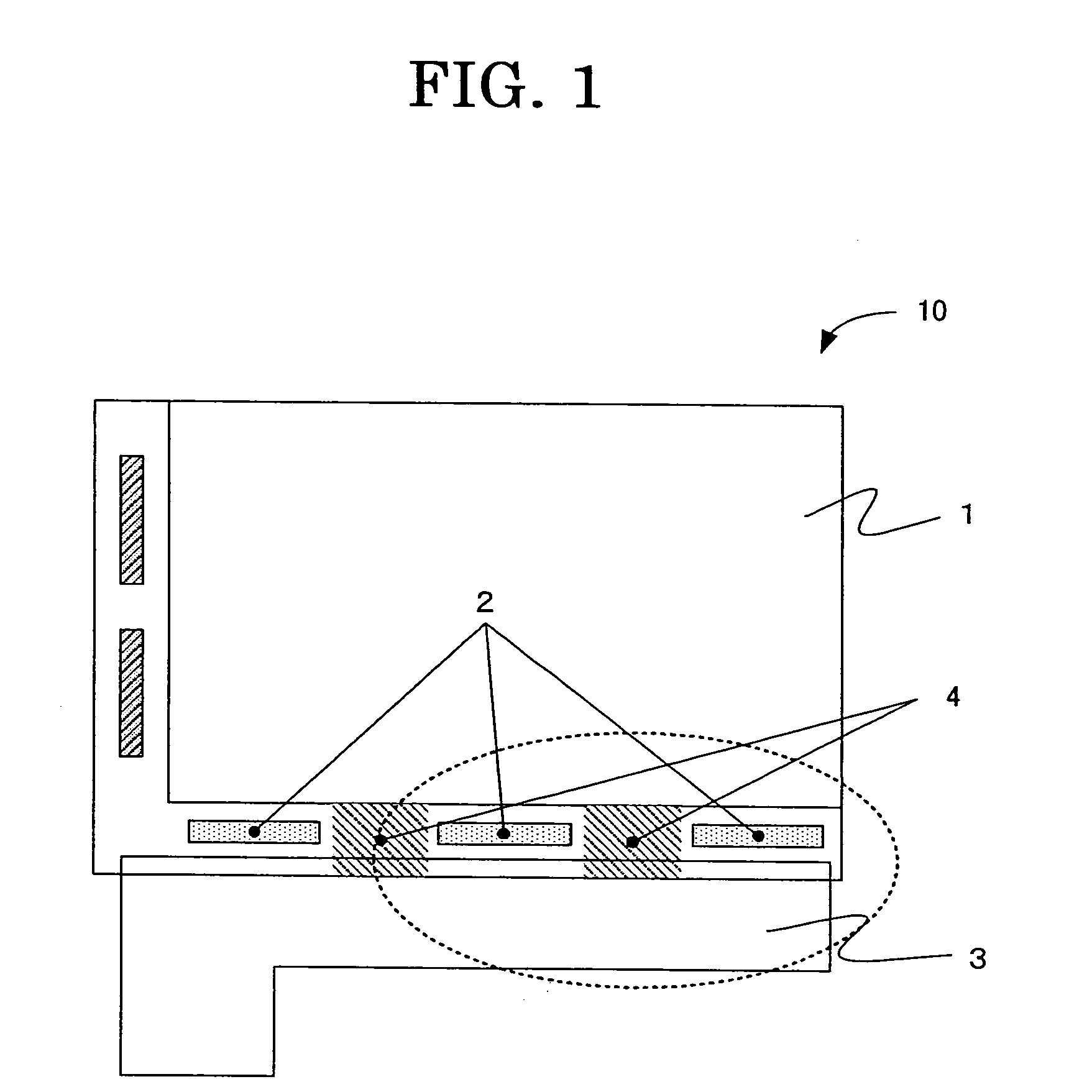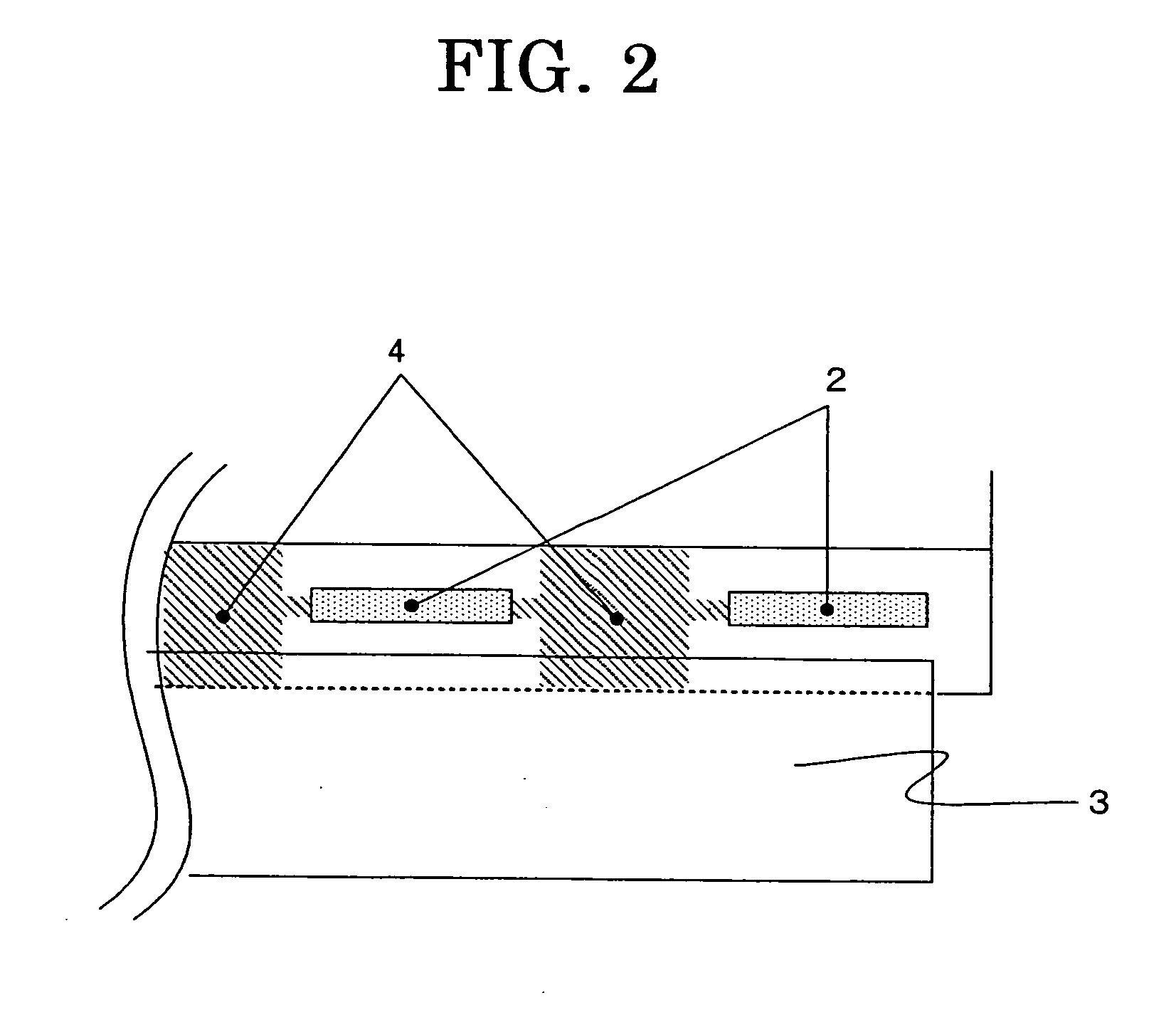Liquid crystal display device and method of making the same
a technology of liquid crystal display and liquid crystal panel, which is applied in the direction of printed circuits, circuit thermal arrangements, instruments, etc., can solve the problems of local changes in the performance of the liquid crystal panel, degradation of display quality, and increase the load so as to reduce the temperature rise of the driver ic, suppress the increase of manufacturing cost, and good heat conductive characteristics
- Summary
- Abstract
- Description
- Claims
- Application Information
AI Technical Summary
Benefits of technology
Problems solved by technology
Method used
Image
Examples
first embodiment
[0034]FIG. 2 is a first embodiment showing in a magnified scale apart adjacent to the driver ICs 2 as shown in FIG. 1. As shown in FIG. 2, the heat dissipation pattern 4 is formed in such a manner to connect or couple adjacent driver ICs 2 and also to the FPC 3.
[0035]Now, the operation of the liquid crystal display device 10 as shown in FIGS. 1 and 2 will be described. In the operating condition of the liquid crystal display device 10 as shown in FIG. 1, the driver ICs 2 are driven and generate heat, thereby raising temperature of the driver ICs 2 as well as the areas adjacent to the driver ICs 2. The heat generated by the driver ICs 2 is conducted to the nearby heat dissipation pattern 4 connected thereto and also conducted to the FPC 3 by way of the heat dissipation pattern 4. Generally, the FPC 3 has a large area of a metal pattern of excellent thermal conductive characteristic, thereby acting as an effective heat dissipation member.
[0036]As apparent from the above description, t...
fourth embodiment
[0042]FIG. 5 is a fourth embodiment showing in a magnified scale a part adjacent to the driver ICs 2 as shown in FIG. 1. As shown in FIG. 5, although the heat dissipation pattern 4 is formed adjacent to the driver ICs 2 similar to the embodiment as shown in FIG. 2, it is not connected to the FCP 3 unlike FIG. 2 but is connected to the adjacent driver ICs 2.
[0043]Although the heat dissipation patterns 4 of the embodiments as shown in FIGS. 3 to 5 exhibit less effective heat dissipation performance as compared to that of the first embodiment, formation of the heat dissipation pattern 4 of good thermal conductive performance adjacent to the driver ICs 2 is effective to achieve more uniform thermal distribution between the driver ICs 2 as compared to prior art in which no heat dissipation pattern is formed. As a result, they are effective to reduce degradation of display quality such as display irregularity or the like due to localized heat generation of the liquid crystal panel 1.
[0044...
PUM
| Property | Measurement | Unit |
|---|---|---|
| thermally conductive | aaaaa | aaaaa |
| heat conductive electrically conductive | aaaaa | aaaaa |
| heat | aaaaa | aaaaa |
Abstract
Description
Claims
Application Information
 Login to View More
Login to View More - R&D
- Intellectual Property
- Life Sciences
- Materials
- Tech Scout
- Unparalleled Data Quality
- Higher Quality Content
- 60% Fewer Hallucinations
Browse by: Latest US Patents, China's latest patents, Technical Efficacy Thesaurus, Application Domain, Technology Topic, Popular Technical Reports.
© 2025 PatSnap. All rights reserved.Legal|Privacy policy|Modern Slavery Act Transparency Statement|Sitemap|About US| Contact US: help@patsnap.com



